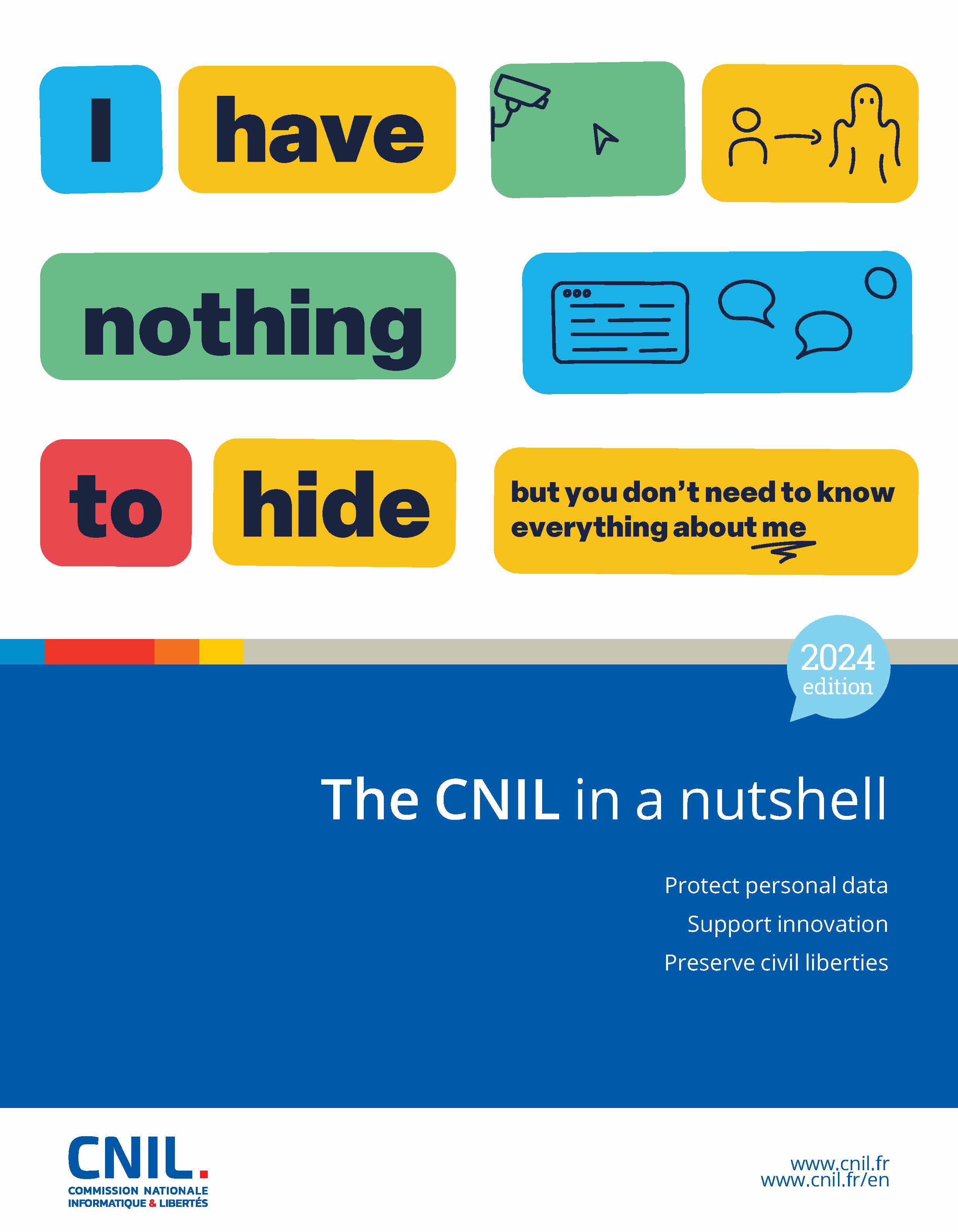Understanding And Implementing The Updated CNIL AI Guidelines

Table of Contents
Key Principles of the Updated CNIL AI Guidelines
The updated CNIL AI guidelines solidify a framework built on several core principles, crucial for responsible AI development. These principles ensure not only legal compliance but also ethical AI practices.
-
Human Oversight: The CNIL strongly emphasizes the importance of human control over AI systems. This "human-in-the-loop" approach necessitates human intervention in critical decision-making processes, particularly in high-stakes scenarios. For example, a fully automated loan application system might require human review for particularly complex cases or applications flagged for potential fraud. Algorithmic accountability is paramount; humans must be able to understand and challenge AI-driven decisions, fostering explainable AI (XAI).
-
Data Protection and Privacy: The guidelines reinforce the importance of GDPR compliance, requiring stringent data protection measures specific to AI data handling. Data minimization is critical – only collect the necessary data for the intended purpose. Robust data security protocols, including encryption and access controls, are essential. Privacy by design must be integrated into the AI system's architecture from its inception, not as an afterthought.
-
Transparency and Explainability: The CNIL stresses the need for transparency regarding how AI algorithms function and their potential impact. This isn't about revealing proprietary trade secrets; it's about ensuring that the decision-making processes are understandable, at least at a high level, to those affected. Techniques for enhancing AI transparency and explainable AI (XAI), such as providing summaries of algorithmic reasoning or using visual tools to illustrate decision paths, are encouraged. Addressing potential algorithmic bias and ensuring fairness are key aspects of transparency.
-
Non-discrimination and Fairness: The updated guidelines place significant focus on mitigating bias in AI systems. Organizations must actively work to identify and address potential sources of bias in data, algorithms, and deployment strategies. Implementing algorithmic bias mitigation techniques and promoting fairness in AI and equity in AI are essential to avoid discriminatory outcomes.
Practical Implementation Strategies for CNIL AI Compliance
Achieving CNIL AI compliance requires a proactive and multi-faceted approach. Here's a breakdown of actionable steps:
-
Conduct a Thorough AI Risk Assessment: Before implementing any AI system, conduct a comprehensive AI risk assessment. This process, often similar to a data protection impact assessment (DPIA), identifies and evaluates potential risks related to data protection, privacy, bias, and other ethical concerns. This risk management strategy should form the foundation of your compliance efforts.
-
Develop a Comprehensive AI Ethics Policy: A clear and concise AI ethics policy outlining your organization's ethical principles for AI development and deployment is vital. This policy should address data privacy, algorithmic transparency, bias mitigation, and accountability. This demonstrates commitment to responsible AI and ethical AI principles.
-
Implement Robust Data Governance Practices: Establishing robust data governance is paramount. This includes implementing secure data storage, access controls, and data lifecycle management to comply with data security regulations and minimize risks. Data should be handled responsibly throughout its lifecycle.
-
Establish Effective Monitoring and Auditing Mechanisms: Continuous AI monitoring and algorithmic auditing are necessary to ensure ongoing compliance. Regularly review AI systems' performance, identify potential issues, and make necessary adjustments. This compliance monitoring demonstrates a commitment to responsible AI practices.
Addressing Specific Challenges in Implementing the CNIL AI Guidelines
Implementing the CNIL AI guidelines presents several challenges:
-
Lack of Technical Expertise: Many organizations lack the necessary AI expertise to navigate these complex regulations. Investing in AI training for existing staff or hiring AI consultants with specialized knowledge can bridge this skills gap.
-
High Implementation Costs: The cost of achieving AI compliance can be substantial. However, a cost-benefit analysis highlighting the potential financial and reputational risks of non-compliance often justifies the investment.
-
Keeping Up with Evolving Regulations: The regulatory landscape is constantly evolving. Staying informed about regulatory updates and AI regulation updates is crucial. Regularly monitoring CNIL updates and subscribing to relevant newsletters will help ensure ongoing compliance.
Ensuring Compliance with the Updated CNIL AI Guidelines
The updated CNIL AI guidelines are not simply legal requirements; they are a crucial framework for building trust and ensuring the responsible use of AI. This article has outlined key principles, practical implementation strategies, and potential challenges. By adhering to these guidelines, organizations can avoid penalties, protect user privacy, and foster public trust. Remember, responsible AI development and deployment offers long-term benefits far outweighing the initial investment.
To learn more about the updated CNIL AI guidelines and ensure your organization's compliance, visit the official CNIL website and consider seeking expert advice on creating a tailored CNIL AI compliance strategy. Download our free AI compliance checklist for a quick overview of key requirements. Contact us today for a consultation on AI legal advice and ensuring your organization is ready for the future of AI.

Featured Posts
-
 Pokhoron Papi Rimskogo Chi Vidbudetsya Zustrich Mizh Trampom Ta Zelenskim
Apr 30, 2025
Pokhoron Papi Rimskogo Chi Vidbudetsya Zustrich Mizh Trampom Ta Zelenskim
Apr 30, 2025 -
 Super Bowl 2024 Blue Ivy And Rumis Red Carpet Debut Without Beyonce
Apr 30, 2025
Super Bowl 2024 Blue Ivy And Rumis Red Carpet Debut Without Beyonce
Apr 30, 2025 -
 Schneider Electrics Strong 2024 Outlook Revenue And Earnings Growth Driven By Data Center Boom
Apr 30, 2025
Schneider Electrics Strong 2024 Outlook Revenue And Earnings Growth Driven By Data Center Boom
Apr 30, 2025 -
 Chelyabinskie Gorki Zakryty Posledstviya Anomalnoy Pogody
Apr 30, 2025
Chelyabinskie Gorki Zakryty Posledstviya Anomalnoy Pogody
Apr 30, 2025 -
 Where To Watch Untucked Ru Pauls Drag Race Season 16 Episode 11 For Free
Apr 30, 2025
Where To Watch Untucked Ru Pauls Drag Race Season 16 Episode 11 For Free
Apr 30, 2025
Latest Posts
-
 Channing Tatum 44 And Inka Williams 25 New Romance Confirmed
Apr 30, 2025
Channing Tatum 44 And Inka Williams 25 New Romance Confirmed
Apr 30, 2025 -
 Exploring The Zoe Kravitz And Noah Centineo Dating Speculation
Apr 30, 2025
Exploring The Zoe Kravitz And Noah Centineo Dating Speculation
Apr 30, 2025 -
 Channing Tatum Dating Australian Model Inka Williams Following Zoe Kravitz Breakup
Apr 30, 2025
Channing Tatum Dating Australian Model Inka Williams Following Zoe Kravitz Breakup
Apr 30, 2025 -
 Channing Tatum And Girlfriend Inka Williams Melbourne Trip Ahead Of Potential F1 Appearance
Apr 30, 2025
Channing Tatum And Girlfriend Inka Williams Melbourne Trip Ahead Of Potential F1 Appearance
Apr 30, 2025 -
 Channing Tatum And Inka Williams New Romance After Zoe Kravitz Split
Apr 30, 2025
Channing Tatum And Inka Williams New Romance After Zoe Kravitz Split
Apr 30, 2025
